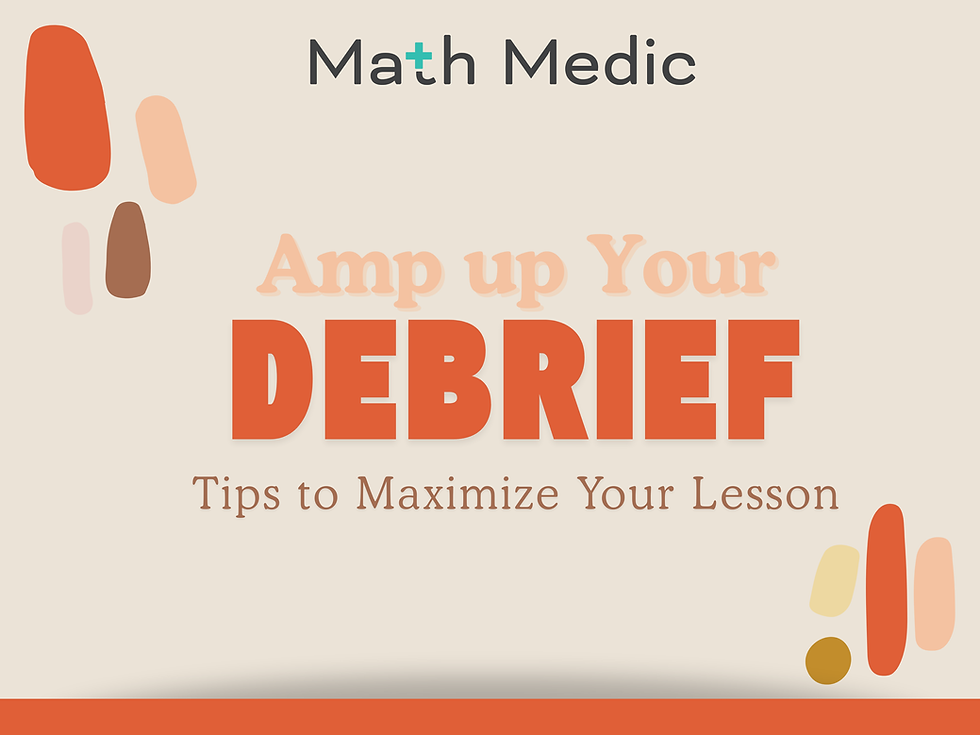The Rights of the Learner: Building Confidence and Equity in an EFFL Classroom
- Karen Sleno

- Sep 16, 2022
- 3 min read
Updated: Feb 16

Karen Sleno is an expert teacher at Flushing High School where she has taught everything from Algebra 1 through AP Calculus and serves as the department chair. Additionally, she is an adjunct instructor at Mott Community College and at the Center for Talented Youth at Johns Hopkins University. In 2022, she won the Michigan Department of Education Regional Teacher of the Year award in Region 5 for her teaching expertise gained over 30 years in the profession. She is a College Board consultant for AP Calculus and has held various roles (including question/exam leader) at the annual AP reading. Her efforts in education and in the AP program earned her recognition as Educator of the Year for her district in 2015.
It’s the start of a new year and after the last two, everyone is optimistic that this one will finally be “normal”. You are about to implement EFFL lessons into your classroom (maybe for the first time), but are wondering how the students will respond. What if your questions are met with silence? What if the group dynamic just doesn’t seem to work? These concerns are not unusual with a new approach to teaching, but there is a novel way to let students know that even if their answer is not complete or even correct, it is valued. Allow me to present…“The Rights of the Learner”.
First introduced in 2017 in an article by Crystal Kalinec-Craig, the purpose of “The Rights of the Learner” is to create an environment where shared thoughts are not judged for correctness and where everyone’s voice has value. Students will come to believe that sharing an idea benefits the entire class and is therefore better voiced aloud than kept to oneself. This may be a big contrast to their previous experience, so the foundation must be laid systematically and reinforced frequently. Let’s begin!
When and how should this discussion be initiated? It makes sense that if your year is to be based on these ideals, the sooner they are presented, the better --- perhaps in the first week of school. Implementing a series of lead-in activities that promote classroom conversation and problem solving (such as the Week of Inspirational Math) would easily pave the way for a dialogue such as this to be initiated. Start by asking students: “When you’re in a classroom, how do you know that you’re respected? What does that feel like?” The opening conversation might involve the ideas of every student having a voice, feeling safe to share thoughts, and not to fear judgment for an idea that is not yet fully formed. It may also be important to stress that these are norms that everyone in the room will follow, including the teacher. Initially, Kalinec-Craig suggests presenting 4-5 rights to the students, such as:
The right to be confused
The right to make mistakes
The right to revise your answer
The right to not be judged by what you say at one point in time
It is important that students understand that these rights are theirs to claim at any time in the learning process because the sharing of ideas is more important than a final correct answer (which halts the thinking process). Following this, students can brainstorm other rights which they would like to add to the list, perhaps “the right to ask questions” or “the right to be afraid”. These ideas can be added to the original list and as a class, can be narrowed down to a top 5 (or 7 or 9) rights that will be the guiding list for the class. Ideally, those finalized rights will be posted where students can see them each day (or perhaps printed on labels that can be affixed to their notebooks).
So, how does this process encourage and improve classroom discussion? This is where teacher modeling and guidance comes in. When a student is brave enough to share an idea, but doesn’t seem confident, a teacher could say, “I see you are exercising your right to ____. That’s great!” Putting value on the emerging thought process rather than the final answer retains the student’s self-image since it was agreed that no one would be judged by what is said during the process of learning a concept.
Intentional conversations such as these at the beginning of the school year set a foundation for a learning environment that is inclusive, equitable, and fair; most importantly, it gives every student’s voice and opinion merit since they know their rights as a learner and can claim them confidently as they journey toward mastery.
Learn more here:
“Rights of the Learner” article from the Democracy & Education Journal
Rough Draft Math: Revising to Learn by Amanda Jenson (2020)



